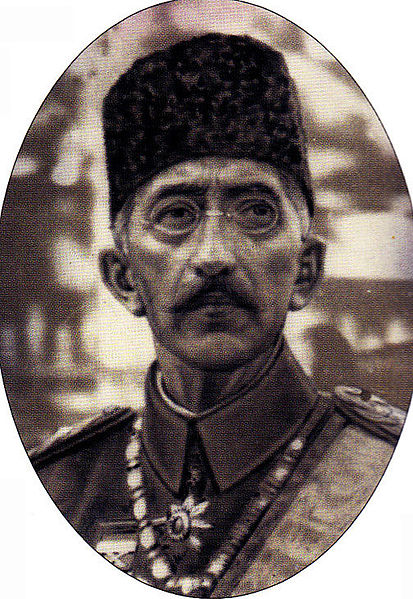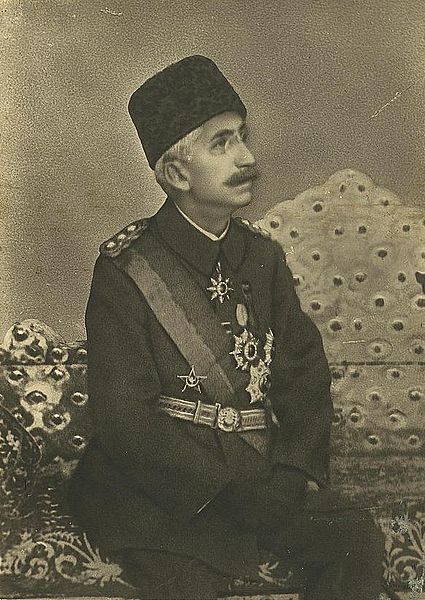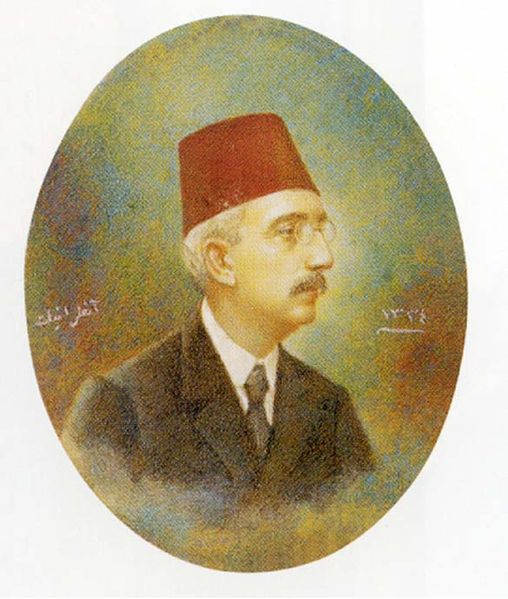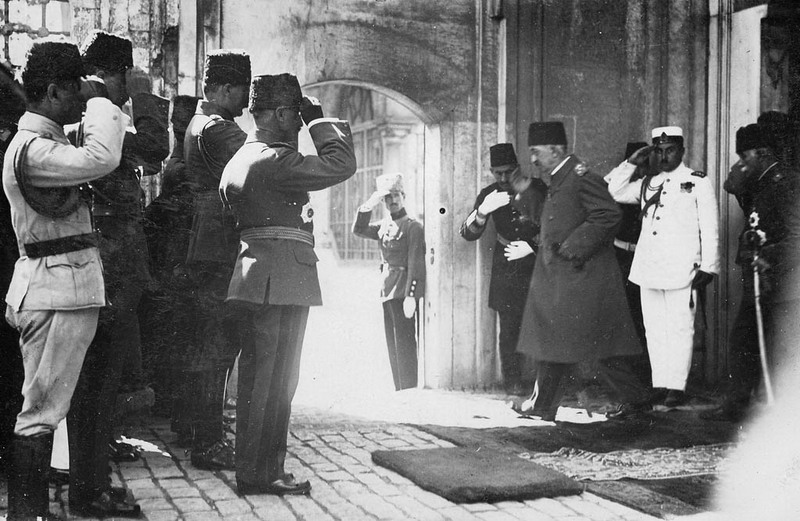<Back to Index>
- Sultan of the Ottoman Empire Mehmed VI, 1861
PAGE SPONSOR



Mehmet VI (Ottoman Turkish: محمد سادس Meḥmed-i sâdis, واحد الدين Wahd aldyn. Turkish: Mehmed Vahideddin or Mehmet Vahdettin) (14 January 1861 – 16 May 1926) was the 36th and last Sultan of the Ottoman Empire, reigning from 1918 to 1922. The brother of Mehmed V, he succeeded to the throne as the eldest male member of the House of Osman after the 1916 suicide of Abdülaziz's son Yusuf Izzettin Efendi, the heir to the throne. He was girded with the Sword of Osman on 4 July 1918, as the thirty - sixth padishah. His father was sultan Abdülmecid I and mother was Gülüstü (1831 – May 1861), a Circassian. Mehmed was removed from the throne when the Ottoman sultanate was abolished in 1922.
Mehmet VI ruled as: His Imperial Majesty, the Grand Sultan Mehmed VI Vahid ed-din, Emperor of the Ottomans, Commander of the Faithful and Successor of the Prophet of the Universe.
He was born in the Dolmabahçe Palace or the Beşiktaş Palace, Beşiktaş, both in Constantinople. On his ninth birthday he was ceremonially circumcised in the special Circumcision Room (Sünnet Odasi) of Topkapı Palace.
The First World War was a disaster for the Ottoman Empire. British and allied forces had conquered Baghdad, Damascus, and Jerusalem during the war and most of the Empire was divided among the European allies. At the San Remo conference of April 1920, the French were granted a mandate over Syria and the British were granted one over Palestine and Mesopotamia. On 10 August 1920, Mehmed's representatives signed the Treaty of Sèvres, which recognized the mandates, removed Ottoman control over Anatolia and İzmir, severely reduced the extent of Turkey, and recognized Hejaz as an independent state.
Turkish nationalists were angered by the Sultan's acceptance of the settlement. A new government, the Turkish Grand National Assembly, under the leadership of Mustafa Kemal (Atatürk) was formed on 23 April 1920, in Ankara (then known as Angora). The new government denounced the rule of Mehmed VI and a temporary constitution was drafted.
The Turkish Grand National Assembly abolished the Sultanate on 1 November 1922, and Mehmed left Constantinople, aboard the British warship Malaya on 17 November. He went into exile in Malta; Mehmed later lived on the Italian Riviera.
On 19 November 1922, Mehmed's first cousin and heir Abdülmecid Efendi was elected Caliph, becoming the new head of the Imperial House of Osman as Abdülmecid II before the Caliphate was abolished in 1924. Mehmed died on 16 May 1926 in Sanremo, Italy, and was buried at the mosque of Sultan Selim I in Damascus.
His first marriage was to Abkhaz HH Emine Nazikedâ Marjim - Abaza Kadın Efendi (Sukhumi,Abkhazia, 9 October 1866 - Maadi, Cairo, 1944 and buried there) in the Ortaköy Palace, Constantinople, on 8 June 1885. They had three children, two surviving into adulthood.
His second marriage was to Georgian HH Seniye Inshira Kadın Efendi (Batumi, 10 July 1887 - Cairo, 10 June 1930) at the Çengelköy Palace, Çengelköy, Üsküdar, Constantinople, on 8 July 1905. The marriage ended in divorce because of an affair with Prens Sabahaddin, she bore him a son in 1910 in Exile on Heybeliada, one of the Princes' Islands of Istanbul, in the days of the Ottoman Empire.His third marriage was to HH Sadiye Mevedett Kadın Efendi (Adapazarı, 12 October 1893 - Çengelköy Palace, Çengelköy, Üsküdar, Constantinople, 1951 and buried there), at the Çengelköy Palace, Çengelköy, Üsküdar, Constantinople, on 25 April 1911. They had one child.
His fourth marriage was to HH Nevare Kadın Efendi (Adapazarı, 4 May 1901 - ?) at the Dolmabahçe Palace, Constantinople, on 20 June 1918. They divorced in 1924, without issue.His fifth marriage was to HH Nimit Nevzad Kadın Efendi ([Constantinople], 2 March 1902 - bef. 1985/199?) at the Yıldız Palace, [Constantinople], on 1 September 1921 and was without issue.
